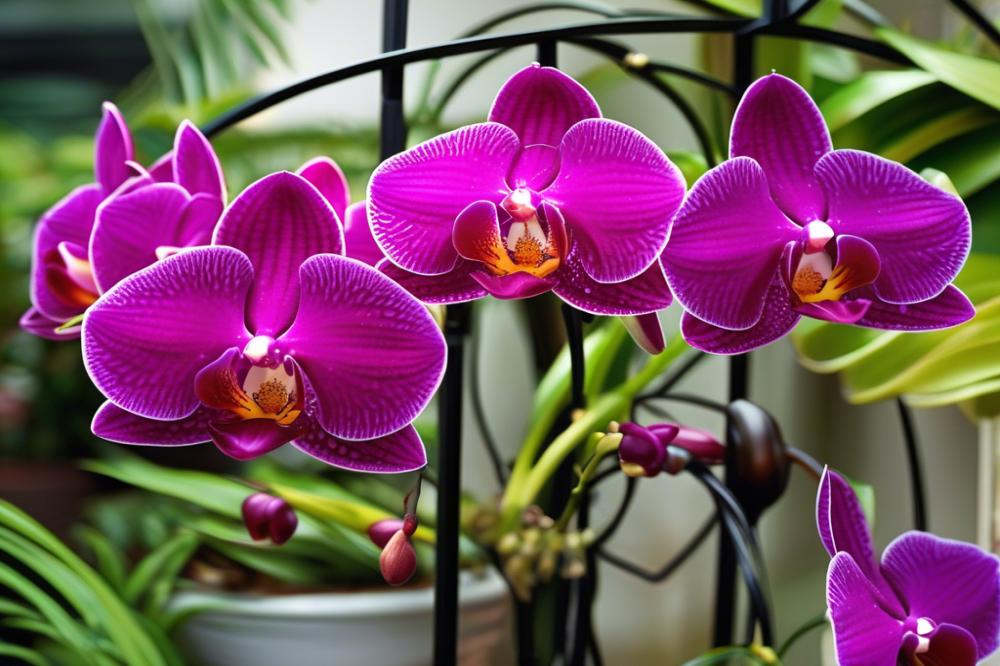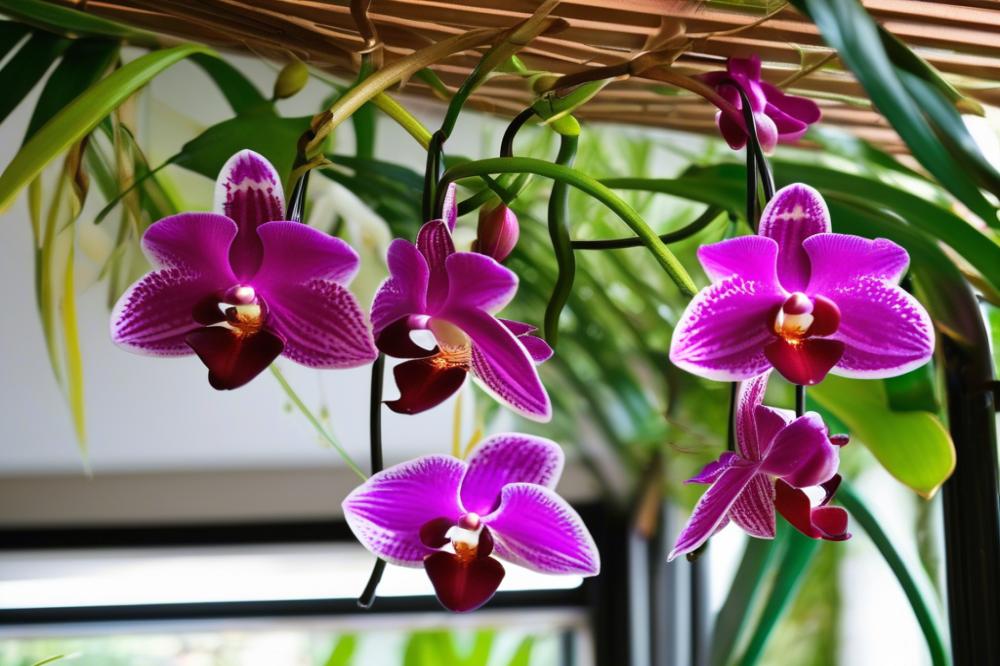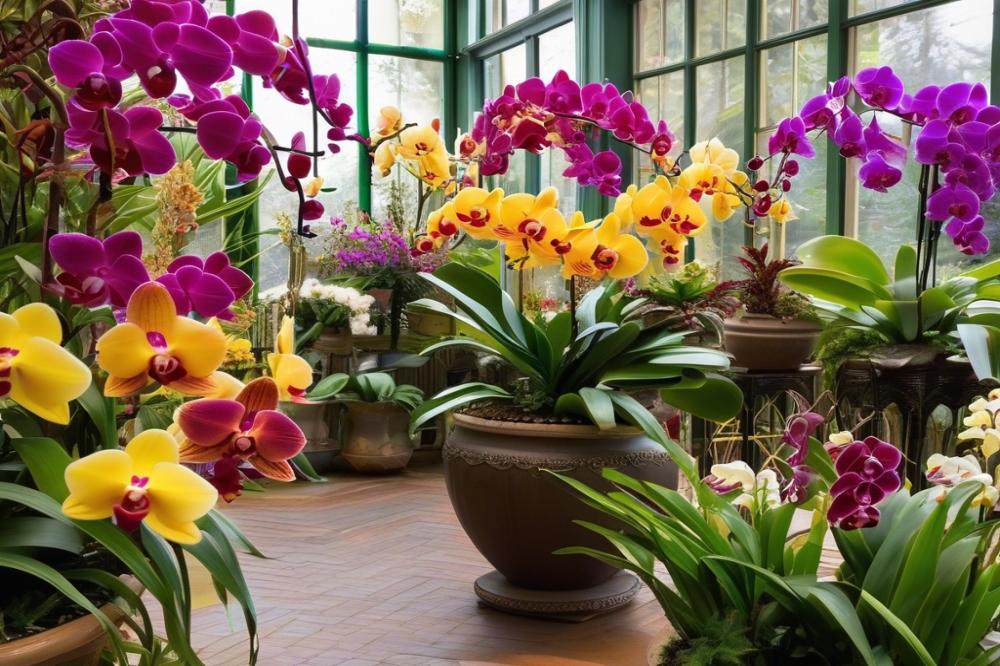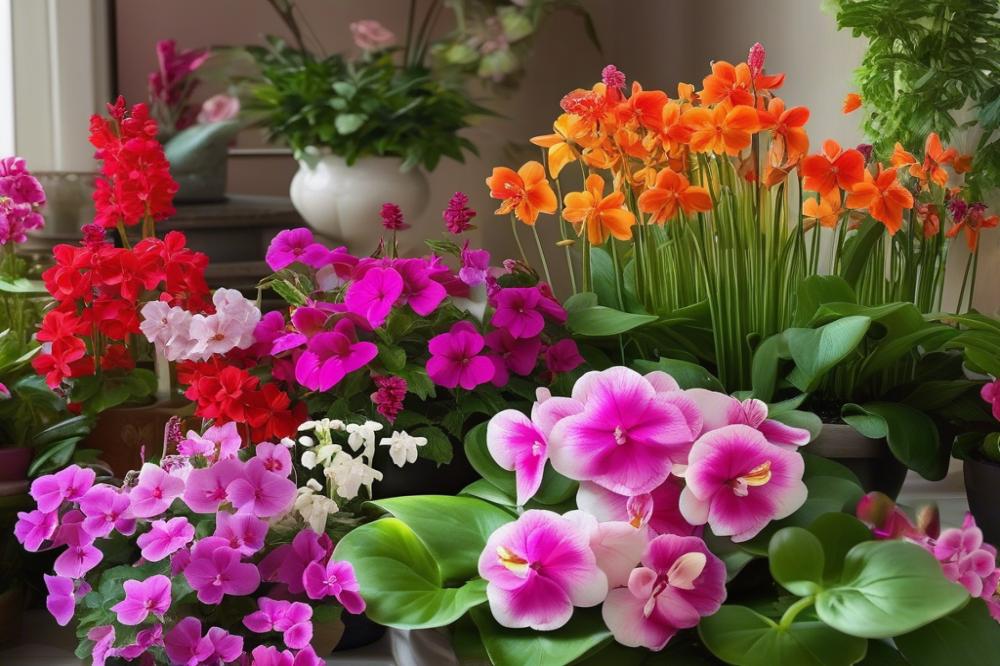How to Grow Orchids in Hanging Baskets
Orchids captivate with their diverse shapes and vibrant colors. These beautiful plants are not only a delight to the eyes but also add a touch of elegance to any space. Many gardeners find joy in nurturing these exquisite blooms. The sight of orchids flourishing in their unique forms brings happiness to both owners and visitors alike.
growing orchids in Hanging Baskets creates an enchanting display. This method offers excellent air circulation around the plants while maximizing exposure to light. When orchids dangle elegantly from above, they can be more accessible for viewing and caring. Hanging baskets can also save precious floor space, making them ideal for smaller areas.
Proper care and the right environment are crucial to the growth of these plants. Different orchid varieties have varied light requirements, so knowing the needs of your specific type is essential. Humidity plays a significant role, too. Most orchids thrive in moist conditions, and hanging them can help regulate humidity levels. Watering tips become vital when tending to these delicate beauties. You must monitor how much moisture is in the potting mix to avoid overwatering, which is a common mistake.
Fertilization also helps promote healthy growth. Different stages of an orchid’s life require different nutrients. A balanced fertilizer supports growth, and adjusting this based on seasonal needs offers the utmost benefit. Keeping track of temperature control is equally important, as most orchids prefer warm environments. With indoor gardening, a little effort goes a long way!
Keeping these factors in mind allows you to appreciate the charm of your orchids fully. By investing time and care into maintaining these plants, you will relish their beauty for years to come. So, why not embark on the journey of growing orchids in hanging baskets? The results can be truly rewarding.
Grow Orchids


Understanding the requirements for orchid cultivation
Growing orchids is not just about planting them. It involves knowing their specific needs. orchid care is critical for success. They thrive in distinct conditions compared to other plants. Light requirements are one major aspect to consider. Most orchids prefer bright, indirect sunlight. Too much direct sun can scorch their leaves. Humidity plays a significant role too. Orchids often flourish in humid environments, ideally between 40-70% humidity. Be prepared to maintain a steady temperature as well.
Watering tips are essential for their health. Overwatering is a common mistake. Orchids prefer their roots to dry out between waterings. This helps prevent root rot. Choosing the right potting mix is also important. An orchid mix typically contains materials like bark, charcoal, or sphagnum moss. This allows for proper drainage and airflow to the roots, which is crucial.
Different types of orchids suitable for hanging baskets
Several orchid varieties shine when grown in hanging baskets. Dendrobiums are a great choice because they have long canes and striking flowers. They benefit from being mounted. Phalaenopsis is another popular option. These orchids produce stunning blooms that last for months. Consider also choosing Oncidium orchids. Their unique flower clusters can cascade beautifully, enhancing the hanging effect.
Think carefully about light and temperature before selecting your orchids. Some varieties need bright light, while others do well in filtered light. Also, take into account your home’s environment. Living spaces with higher humidity will benefit more delicate species. Fertilization is another point to ponder. Regular feedings with orchid-specific fertilizers will nourish them. Assess your capacity for routine orchid care. Those new to gardening might choose lower-maintenance varieties first. Always remember that not all orchids grow the same way. Some prefer a stable environment, while others are more resilient to fluctuations. Make sure to enjoy the process. Orchid growing can become a rewarding and beautiful hobby. Caring for orchids requires a few key practices. Watering tips are crucial to keeping them healthy. Always choose a potting mix designed specifically for orchids. This mix allows proper drainage. Overwatering can lead to root rot, so be mindful of how much you give them. Regularly check the roots. Healthy roots should be firm and green. If they appear brown or mushy, it’s time to adjust your watering habits. Fertilization plays a big role too. Feeding orchids every few weeks during the growing season helps them thrive. Use a balanced fertilizer that is formulated for orchids. This encourages blooming and growth. Remember, not all orchid varieties need the same care, so research your specific type for the best results. Light requirements vary among different orchids. Most thrive in bright, indirect light. Direct sunlight can scorch their leaves, so finding the right balance is essential. A south or east-facing window usually provides the perfect conditions. However, you can also use grow lights if natural light is limited. Observe your plants; weak or leggy growth can indicate insufficient light. A little adjustment can go a long way. Move them closer to the light source if they seem to be struggling. Alternatively, if leaves appear yellow, they might be getting too much sun. Adjust accordingly to meet their unique needs. Humidity is another critical factor in orchid care. Most species enjoy humidity levels around 40-70%. Dry indoor environments can be harmful, especially in winter. Consider using a humidity tray or a humidifier to maintain moisture. Grouping plants together can also create a microclimate. Regular misting helps to increase humidity around your orchids. Just be cautious not to let water sit in their crowns, as this can lead to rot. It’s all about finding the right balance. Temperature control is vital for orchids. Many prefer a daytime temperature of 70-80°F and a slightly cooler night temperature. This drop in temperature encourages blooming in many varieties. During summer, ensure they have adequate air circulation to prevent overheating. If your home tends to get too warm, consider moving them to a cooler room or adjusting their location. If outdoor conditions allow, many orchids can benefit from spending time outside in mild weather. The changing environment can trigger new growth. Just watch for sudden temperature changes, as they can stress your plants. With these essentials, you’re well-equipped to provide the best care for your orchids. Understanding their unique needs will help you enjoy beautiful blooms for years to come. Finding the proper potting mix is crucial for a successful orchid garden. Many orchids thrive in a mix that allows excellent drainage and airflow. Traditional soil is often a poor choice. Instead, consider a combination of bark, sphagnum moss, and perlite. This blend mimics their natural habitat while providing necessary nutrients. Ensure your chosen mix hinges on the specific orchid varieties you own. Some need slightly different ingredients for optimal growth. Understanding how to pot and mount orchids can transform your approach. Potted orchids typically require a more structured environment. They often benefit from potting mixes that retain some moisture and offer stability. Mounting orchids creates a more natural setting. These plants attach themselves to wood or cork and thrive in humid environments. Each method satisfies different light requirements and watering tips. Mounting might require more frequent watering, while potted orchids stay moist longer. Mounting orchids can be a rewarding experience if done correctly. Start by selecting a sturdy mount, such as a piece of driftwood or a cork slab. Secure the orchid’s roots gently, using fishing line or thin wire to hold it in place. Don’t forget to position the plant for the best light exposure. Proper humidity is essential for mounted orchids, as they rely on moisture in the air. Consider misting the plants daily if your home has low humidity. Regular fertilization will also support their growth. Temperature control is vital; most orchids prefer warmer conditions. With these tips, your hanging baskets will become a vibrant display of beauty. Watering orchids in hanging baskets can be a challenge. Choosing the right potting mix is crucial. A well-draining mix prevents root rot. To water effectively, submerge the basket in a container filled with room-temperature water. This method encourages even moisture absorption. After about 15 to 20 minutes, remove the basket and let excess water drain out. Adjusting your watering method based on the season will keep your orchids thriving. High humidity levels can mean less frequent watering. Incorporating a moisture meter can help gauge when your orchids need a drink. Recognizing the signs of overwatering is essential for orchid care. Yellowing leaves may indicate too much moisture. Root rot, which appears as dark or mushy roots, can also be a serious problem. In contrast, underwatering shows itself through dry, shriveled leaves or roots. A quick touch will tell you if the potting mix feels dry. Orchids need a balance, so monitor their appearance regularly. If blooms start to drop, it could mean they need attention. Watering frequency varies with seasons and local climate. In the spring and summer, warmer temperatures and higher light requirements can lead to faster drying of the potting mix. Water every week during this active growth phase. As winter arrives and temperatures drop, the need for water decreases. Water every two weeks or even once a month, depending on humidity. Those growing orchids indoors should check moisture levels more frequently due to indoor heating. Always remember that each orchid variety may have its own unique demands as well. Adjust accordingly for the best results. Fertilization plays a key role in healthy orchid growth. Orchids, like all plants, require essential nutrients to thrive. These nutrients support blooming and leaf development. Without proper nourishment, even the best orchid care routines can fall flat. A nutrient-deficient orchid may not flower well and can look weak or sickly. Therefore, applying the right fertilizer is critical. Healthy roots lead to vibrant blooms, and that starts with effective feeding. When selecting fertilizers for orchids, you have several options. Liquid fertilizers are popular among indoor gardening enthusiasts. They are easy to apply and quickly absorbed by the roots. Slow-release fertilizers offer another great choice. They provide a steady supply of nutrients over time, which can be beneficial for busy gardeners. Organic options, such as fish emulsion or compost tea, are also excellent. Keep in mind the specific requirements of different orchid varieties. Each might benefit from slightly different nutrient ratios. Effective fertilization requires timing and technique. Always fertilize during the growing season, which typically lasts from spring to early fall. Dilute the fertilizer to half the recommended strength to prevent burning the roots. Apply the mixture every couple of weeks to keep nutrients flowing. Ensure that the potting mix holds moisture, as orchids need water to absorb the nutrients they receive. Timing is essential; never fertilize a dry plant. Water thoroughly before applying any solution. It’s equally important to inspect for health signs. Yellowing leaves may indicate too much fertilizer, while faded blooms may suggest a lack of nutrients. Adjust your fertilization schedule according to these signals. Create a checklist for orchid care that includes not only light requirements and humidity but also regular feeding. Stay aware of temperature control and its effects on nutrient uptake. Maintain a balanced approach to fertilizing; this method will enhance the beauty of your hanging orchids significantly. Growing orchids in hanging baskets can be a rewarding experience. It combines beauty and a little challenge to enhance your gardening skills. Make sure to choose the right basket that facilitates drainage, as this is vital for their health. With the proper potting mix, orchids can thrive in this unique environment. Regularly check on their moisture levels, and remember that they prefer bright, indirect light. It’s crucial to be attentive but not overbearing with your orchid care. Consider exploring a variety of orchids. Each type has distinct traits that may surprise you. From the classic Phalaenopsis to the more exotic Cattleyas, there’s a world of colors and shapes to discover. Varying your collection not only adds visual interest but also allows you to learn different care techniques. Indoor gardening with orchids is more than just a hobby. It brings joy and a sense of accomplishment. Watching your plants flourish can be greatly satisfying. The time and effort you invest will pay off when you see those beautiful blooms hanging gracefully in your home. So go ahead and take the plunge. Start your orchid journey today!Orchid Care


Essential orchid care practices
Light requirements for healthy growth
Humidity levels and their impact on orchids
Temperature control for optimal orchid health
Potting Mix and Mounting Orchids


Choosing the Right Potting Mix for Orchids in Hanging Baskets
Differences Between Potting and Mounting Orchids
Techniques for Mounting Orchids Effectively
Watering Tips


Best Practices for Watering Hanging Orchids
Signs of Overwatering and Underwatering
Frequency of Watering Based on Seasons and Climate
Fertilization
Importance of Fertilization in Orchid Growth
Types of Fertilizers Suitable for Orchids
How to Effectively Fertilize Hanging Orchids
Final Thoughts on Growing Orchids in Hanging Baskets



